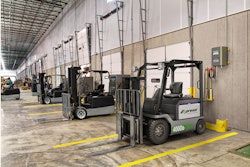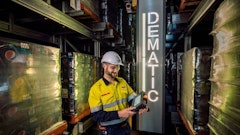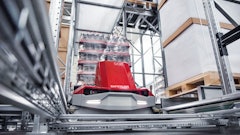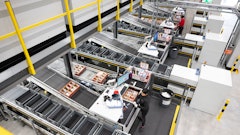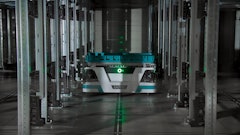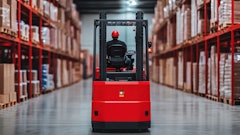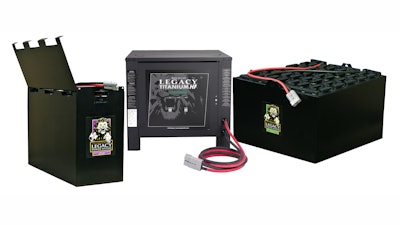
Market acceptance of electric forklifts has steadily increased in the last six years, according to the Electric Power Research Institute (EPRI), with electric forklifts representing 64 percent of the U.S. market. In addition to offering cost and performance benefits, electric forklifts also enable companies a way to enhance their environmental profile. Here are some of the ways electric forklifts help facilities go “green.”
Greatly reduce emissions: For every 10,000 hours of use, internal combustion (IC) engine-powered forklifts emit 120,000 more pounds of carbon emissions than electric-powered forklifts, according to EPRI. In fact, according to the U.S. Department of Energy (DOE) GREET Life Cycle calculator, electric forklifts produce the lowest well-to-wheel greenhouse gases of any forklift.
Reduce energy usage: With almost no emissions, there is no need to ventilate exhaust, reducing energy usage. Electric forklifts also generate very little heat, compared to IC forklifts. This reduces the strain on warehouse temperature-control units and the cost for cooling and air conditioning.
Cut fuel usage and costs: Electric powered forklifts do not require any fuel, an immediate and ongoing savings. For every gallon of liquid propane used, only 6 kW hours of electricity are used. An electric forklift can achieve savings of up to $9,000 per truck per year compared to IC forklifts (based on 2,000 hours of operation per year).
Minimize waste: With electric forklifts, there are no engine, transmission or coolant fluid changes and no need to dispose of used fluids, oil and filters. Furthermore, batteries may be recycled. More than 98 percent of all battery lead is recycled.
Reduce noise pollution: An electric forklift does not produce engine noise, allowing the operator to hear better for enhanced operation and safety.
Increase floor space: With an electric forklift, there is no need for gasoline or propane storage outdoors. Electric charging stations do not present the same hazards that come with storing liquid fuels on-site. Today’s new battery charging technologies (i.e., opportunity or fast charging) eliminate battery changing stations and reduce battery inventory, further freeing valuable floor space.
Reduce maintenance: Maintenance is the key to efficient forklift operation. Unlike IC forklifts, electric forklifts don’t have engines, transmissions or cooling systems. With fewer moving parts, maintenance is significantly reduced. An IC truck costs, on average, 30 to 40 percent more to maintain over its life than electric trucks due to more frequently scheduled maintenance.
Electric forklifts continue to gain in acceptance as they help companies enhance their “green” profiles through reduced emissions, energy, fuel usage, waste, noise level, maintenance and increased floor space. For more information on converting from an IC fleet to an electric fleet, including an online “IC2E” calculator, visit www.douglasbattery.com/calculator.aspx.





